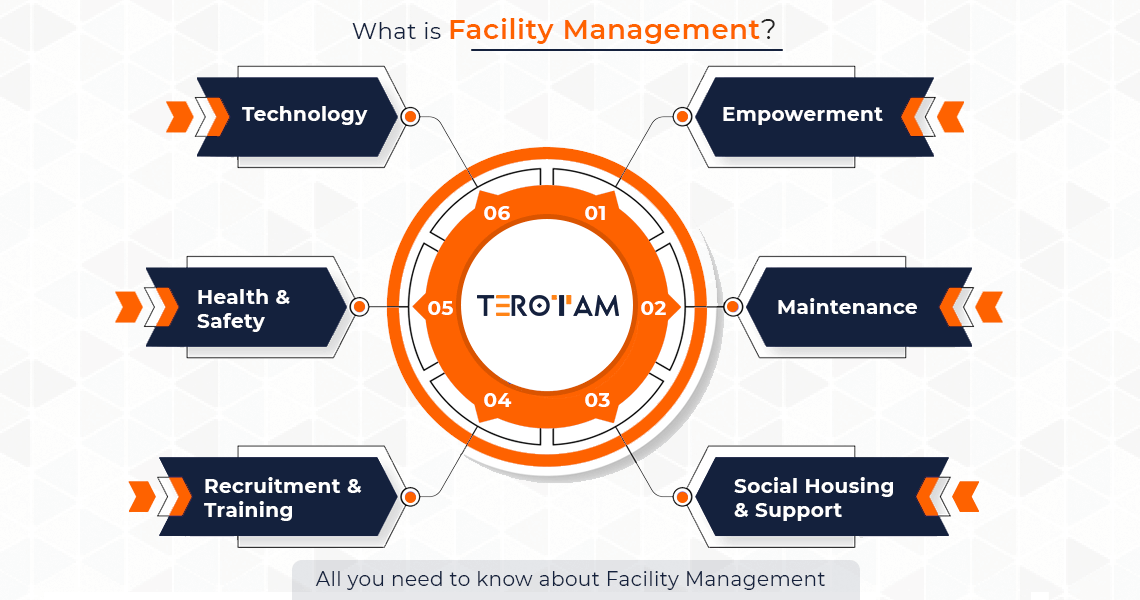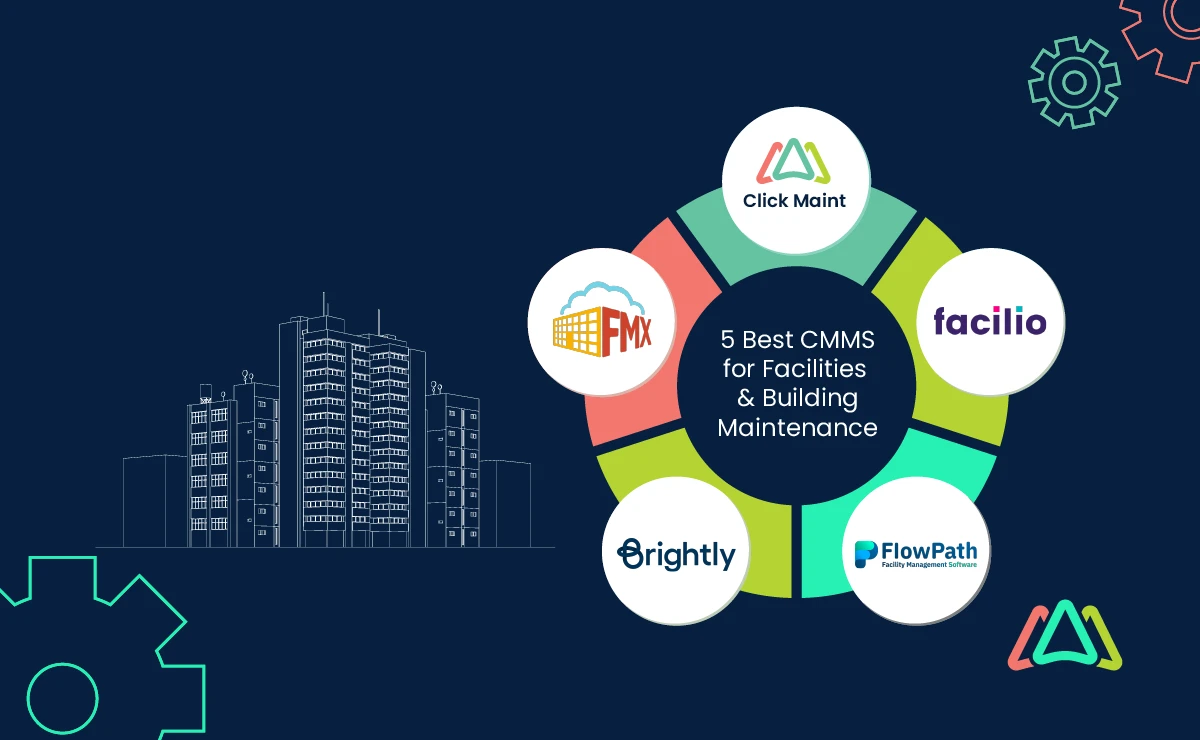The Important Overview to Facility Management: Methods for Success
Center administration plays a crucial duty in the general success of a company, serving as the foundation that sustains performance, efficiency, and security. The subtleties of effective center monitoring extend beyond plain logistics and call for an extensive understanding of both quantitative and qualitative metrics.
Comprehending Center Management
What makes up effective facility administration? Reliable facility administration includes the control of numerous organizational functions to guarantee that constructed settings are safe, reliable, and conducive to efficiency. It integrates the concepts of architecture, company, and design administration to create a seamless operational circulation within a company.
Crucial element of facility administration include area preparation, maintenance management, and conformity with wellness and security guidelines. Space planning concentrates on enhancing the use of physical resources to support business objectives, while upkeep monitoring ensures that facilities are kept in optimum problem, optimizing lifespan and lowering functional expenses. Conformity with legal and governing criteria is critical, as it safeguards the company versus possible responsibilities and boosts its track record.
In addition, reliable center monitoring relies upon the calculated use of innovation, such as Building Monitoring Equipment (BMS) and Computer-Aided Facility Management (CAFM) tools. These modern technologies promote real-time surveillance of building systems and improve maintenance processes (Facility Management). Ultimately, a comprehensive approach to center administration not only advertises operational efficiency yet likewise promotes a positive setting for site visitors and employees alike, driving total business success

Key Techniques for Optimization
Enhancing facility administration needs a calculated strategy that straightens functional techniques with business purposes. To attain this, the initial vital approach is the execution of incorporated technical solutions. Utilizing innovative software program systems enables real-time surveillance of center operations, helping with data-driven decision-making and boosting total performance.
Second of all, routine assessments of center efficiency are necessary. Carrying out routine examinations and audits makes it possible for facility managers to recognize areas that need renovation, making sure that resources are allocated properly. This positive approach aids in minimizing downtime and boosting service delivery.
One more vital strategy is cultivating partnership across divisions. By motivating open interaction between groups, facility supervisors can better straighten their strategies with organization goals, bring about improved functional synergy. In addition, engaging personnel in training programs advertises a culture of liability and improves their capacity to add to optimization initiatives.
Enhancing Safety Procedures
Reinforcing safety procedures is essential for producing a safe and secure atmosphere within centers. A comprehensive security method not only safeguards staff members and site visitors but additionally boosts operational effectiveness. Facility Management. To accomplish this, center supervisors must carry out routine danger evaluations to make sure and recognize possible threats that appropriate steps remain in place

Additionally, clear communication channels must be developed to report security concerns immediately. This includes producing an obtainable system for employees to articulate potential threats or cases without fear of retribution. Leveraging modern next page technology can enhance security procedures; for instance, carrying out security systems and accessibility controls aids monitor center tasks and limit unauthorized entry.
Lastly, compliance with local policies and industry standards is non-negotiable. Regular audits and reviews of safety and security methods make certain alignment with current laws and ideal techniques. By focusing on these methods, facility managers can grow a society of security that safeguards all stakeholders and eventually adds to the organization's success.
Improving Workplace Setting
A favorable workplace setting significantly boosts worker morale and performance, making it a crucial focus go to the website for center administration. To create such an atmosphere, facility supervisors must prioritize numerous crucial elements, consisting of functional designs, appearances, and worker engagement.
Ergonomic factors to consider are vital to minimize physical pressure and discomfort. This entails offering flexible furniture, correct illumination, and adequate area for movement. These modifications can lead to minimized absenteeism and boosted work fulfillment.
Visual appeals play a vital function fit the workplace ambience. Utilizing color psychology, all-natural lights, and greenery can promote a boosting and welcoming atmosphere. Attentively made spaces can improve creative thinking and improve general wellness.
In addition, encouraging worker involvement via comprehensive decision-making processes can improve the sense of possession and belonging. Gathering responses on workplace enhancements and entailing staff members in the design process can result in a much more tailored setting that meets their demands.
Lastly, promoting well-being efforts, such as wellness programs and relaxation areas, can even more add to a helpful work environment society. By concentrating on these approaches, center supervisors can successfully enhance the office atmosphere, driving both worker complete satisfaction and organizational success.
Measuring Success in Facilities
Determining success in facility management requires a comprehensive strategy that reviews both measurable and qualitative metrics. Quantitative metrics typically consist of vital performance signs (KPIs) such as area usage prices, energy consumption, upkeep expenses, and occupancy degrees. These metrics supply a clear photo of operational performance and economic performance, permitting facility supervisors to identify locations for enhancement and benchmark versus industry requirements.
Qualitative click to read more metrics, on the other hand, emphasis on individual satisfaction and worker engagement. Studies and feedback devices can evaluate just how well the facilities satisfy the needs of passengers, helping to analyze the overall office environment. This element is essential, as a completely satisfied workforce is commonly linked to boosted performance and retention rates.
To properly gauge success, facility supervisors should likewise take into consideration integrating technology, such as developing management systems and data analytics devices, to accumulate and analyze appropriate information. Frequently assessing both collections of metrics permits a much more balanced view of performance and educates critical decisions. Ultimately, a successful center monitoring approach rests on a commitment to continuous improvement, making sure that both functional performances and customer satisfaction are prioritized.

Conclusion
To conclude, efficient center administration is essential for boosting organizational performance. By applying integrated technical solutions, carrying out normal evaluations, and cultivating collaboration across divisions, organizations can attain optimal source allotment and operational effectiveness. Focusing on safety procedures and boosting workplace atmospheres better contribute to boosted staff member complete satisfaction. Gauging success with both measurable and qualitative metrics enables for constant renovation, inevitably leading to lowered functional prices and an extra effective business ambience.
Facility monitoring plays an essential duty in the general success of an organization, serving as the foundation that sustains efficiency, efficiency, and safety and security.Key elements of center administration include room planning, upkeep administration, and conformity with health and wellness and safety guidelines.Additionally, reliable facility monitoring depends on the tactical usage of innovation, such as Structure Management Equipment (BMS) and Computer-Aided Facility Administration (CAFM) devices. Eventually, a thorough method to center management not just promotes functional performance but likewise cultivates a positive atmosphere for visitors and staff members alike, driving overall organizational success.
Inevitably, an effective center monitoring strategy hinges on a dedication to continual improvement, ensuring that both operational effectiveness and customer satisfaction are prioritized.